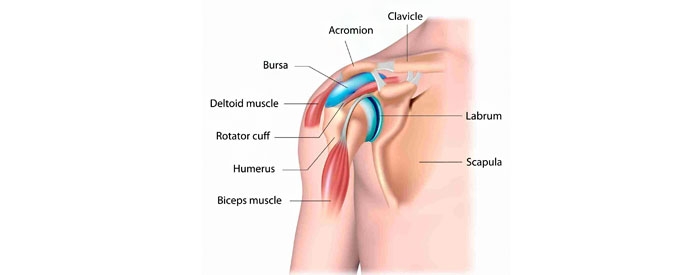
Revolutionizing Pain Relief: Discover Non-Surgical Solutions in Mumbai
Living with persistent shoulder discomfort can impede even the simplest of activities. What most individuals commonly refer to as the "shoulder" comprises an intricate amalgamation of joints, tendons, and muscles. This intricate system enables a broad spectrum of arm movements, from the mundane act of scratching one's back to executing a flawless pitch on the field. If you're seeking effective pain treatment without the need for surgery, look no further. Mumbai offers a spectrum of non-surgical solutions that promise lasting relief.
Shoulder Mobility: A Dual-Edged Sword
The boundless mobility of the shoulder comes at a cost. While it empowers an array of movements, it also renders the area susceptible to instability and soft tissue impingement. This vulnerability culminates in discomfort. Pain may surface only during shoulder movement or persist continually, serving as an alarm for potential issues. The pain's duration can vary, necessitating medical evaluation and tailored treatment. Avail effective Pain Treatment Without Surgery in Mumbai to regain control over your daily life.
Exploring the Spectrum: Shoulder Pain and Its Origins
This article delves into the underlying causes of shoulder pain and unveils non-surgical treatment alternatives. It serves as an informative guide; however, for a personalized understanding of your condition, consult a healthcare professional.
Deciphering Shoulder Pain Symptoms
Shoulder pain originates from diverse sources, each accompanied by its distinct symptoms. Depending on the root cause, you might experience:
Deep-seated pain within the shoulder joint, spanning the back, front, or upper arm. In some instances, the sensation might resemble a &qout;catching pain.&qout; The type and location of pain correlate with the underlying trigger.
Limited shoulder movement accompanied by pain.
Weakness in the shoulder or upper arm muscles. Conditions might induce a transient joint slipping sensation or even complete dislocation.
Tingling and burning sensations akin to pins and needles. Such occurrences often link to neck nerves rather than the shoulder joint itself.
Restricted mobility post shoulder dislocation, primarily due to pain. Conditions like complete rotator cuff tears or axillary nerve injury manifest as arm movement weakness, warranting close clinical examination.
Indications for Medical Intervention
In scenarios where injury is the pain's root cause, and indicators include:
A visibly distorted joint.
Inability to utilize the joint or extend the arm away from the body.
Severe pain.
Sudden swelling.
If your shoulder pain is accompanied by symptoms like swelling, redness, tenderness, and warmth around the joint, consulting a healthcare professional is advisable.
Diverse Painful Conditions and Non-Surgical Remedies
Shoulder Arthritis: Arthritis, characterized by the erosion of smooth cartilage lining shoulder joints, triggers pain during arm movement. Beyond pain, inflammation accompanying arthritis can induce swelling and joint degeneration. Varied types of arthritis encompass:
Osteoarthritis: Age-related cartilage wear and tear between shoulder joint bones result in inflammation and pain.
Rheumatoid Arthritis: Immune system malfunction leads to cartilage lining erosion between shoulder joint bones, often affecting multiple joints.
Post-Traumatic Arthritis: Trauma or fracture to the shoulder leads to this form of arthritis.
Unmasking Arthritis Symptoms
Typical arthritis symptoms involve:
Shoulder pain.
Swelling.
Redness or warmth around the affected area.
Difficulty lifting your arm.
Audible clicking when raising your arm.
Consult a healthcare professional to decipher your condition and tailor a suitable treatment plan.
A Glimpse into Additional Painful Ailments
Frozen Shoulder: Frozen shoulder, scientifically termed adhesive capsulitis, signifies stiffness and pain in the shoulder joint. Gradual onset, escalating pain, and subsequent resolution within one to three years typify this condition. Risk escalates following medical conditions hindering arm movement, like stroke or mastectomy.
Rotator Cuff Conditions: The rotator cuff, an amalgamation of muscles and tendons around the shoulder joint, maintains upper arm bone stability within the shoulder socket. A rotator cuff injury leads to a dull shoulder ache, intensifying when the arm moves away from the body.
Shoulder Dislocation: A dislocated shoulder entails the upper arm bone detaching from its shoulder blade socket due to external force. Prompt medical attention is necessary.
Shoulder Fractures: Fractures impact clavicle, proximal humerus, and scapula. These vary with age, occupation, and bone health.
Shoulder Instability: Shoulder instability, induced by weak muscles and ligaments, results in painful dislocations and limited arm movement.
Shoulder Separation: Separated shoulder, involving ligament injury connecting clavicle and shoulder blade, can be managed conservatively.
Pioneering Pain Relief: Choosing Non-Surgical Alternatives
Embracing non-surgical pain treatment options in Mumbai can be transformative for those seeking relief without resorting to surgery. Whether physical therapy, regenerative treatments, or alternative therapies, these approaches cater to diverse pain conditions. Collaborating with a non-surgical pain specialist guides you towards the most suitable treatment plan, restoring comfort and overall well-being
Conclusion
In conclusion, non-surgical pain treatment offers a promising avenue for individuals seeking relief from chronic pain in Mumbai. By embracing these innovative approaches, you can avoid the risks and challenges associated with surgical procedures while effectively managing your pain. Reach out to PainCare Specialist to explore these non-invasive options and take a significant step toward a pain-free life.
FAQs About Non-Surgical Pain Treatment
Q1: Are non-surgical treatments equally effective for all types of pain?
A1: Non-surgical treatments are effective for a wide range of pain conditions, but the suitability depends on the individual case. Consulting a pain specialist can help determine the best approach for your specific condition.
Q2: Is there an age limit for receiving non-surgical pain treatments?
A2: Age is not necessarily a limiting factor. Non-surgical treatments can be tailored to suit patients of various age groups, provided they are deemed medically appropriate.
Q3: How soon can I expect to experience pain relief from these treatments?
A3: The timing of pain relief can vary depending on the treatment and individual factors. Some patients experience immediate relief, while others may notice improvement over time as the body heals.
Q4: Are there any side effects associated with non-surgical pain treatments?
A4: While side effects are generally minimal, some individuals may experience temporary soreness, redness, or swelling at the injection site. These effects are usually mild and subside quickly.
Q5: Will my insurance cover non-surgical pain treatments?
A5: Insurance coverage varies, so it's advisable to check with your insurance provider. Many non-surgical treatments are covered, especially when they are deemed medically necessary.
